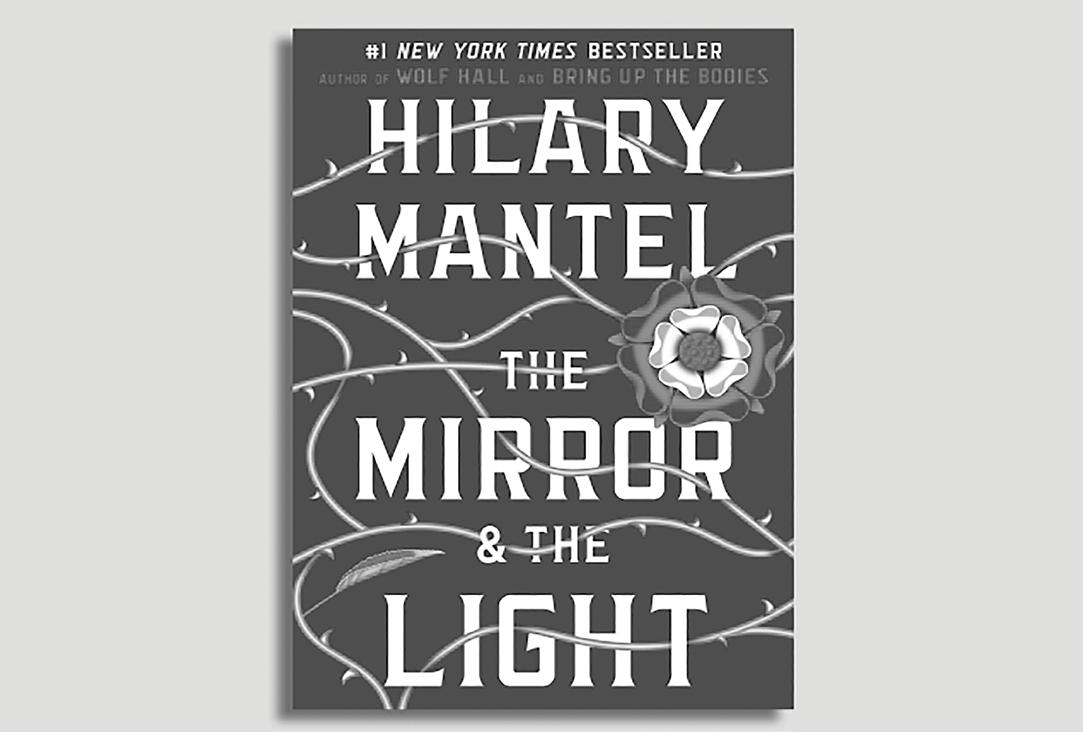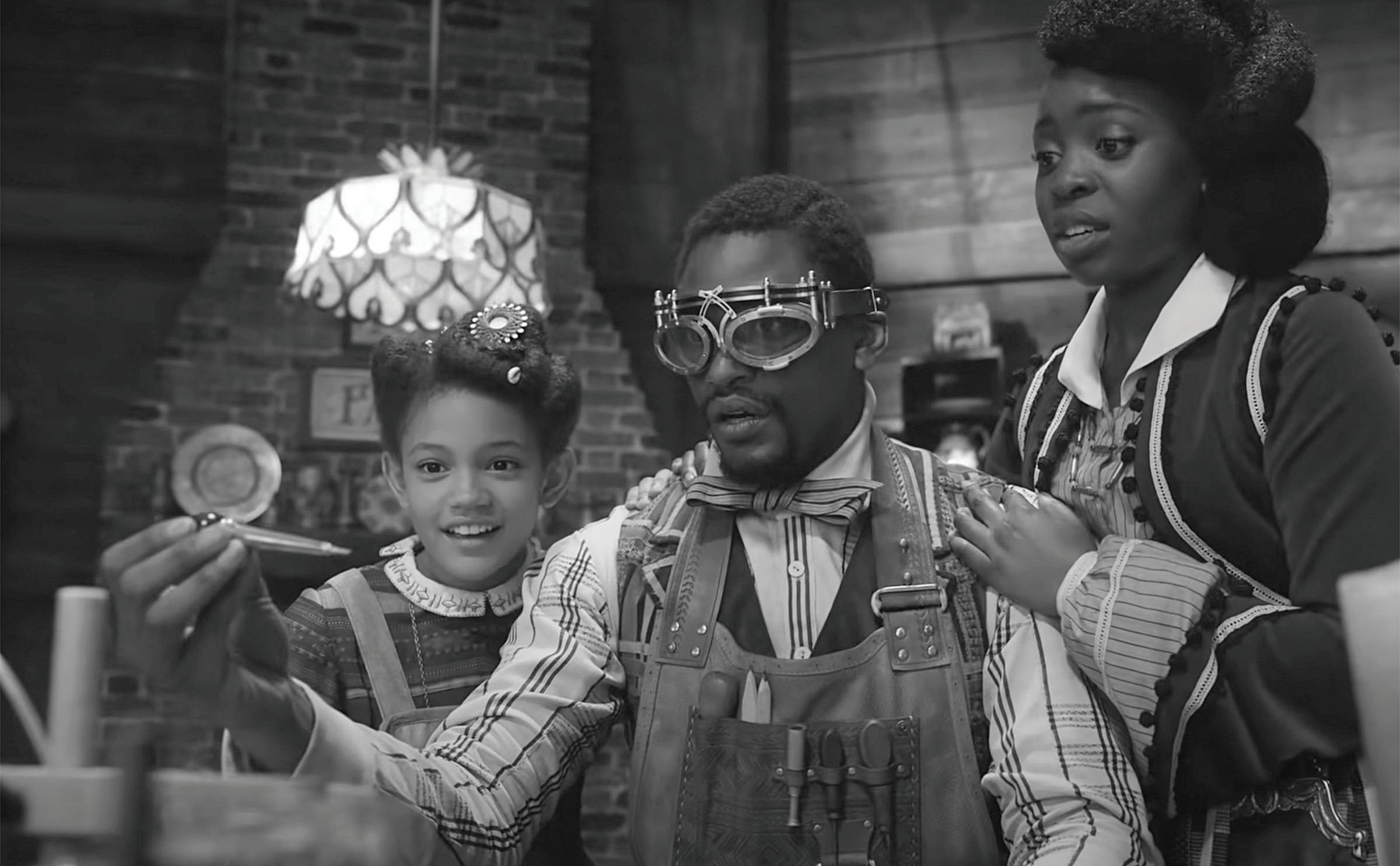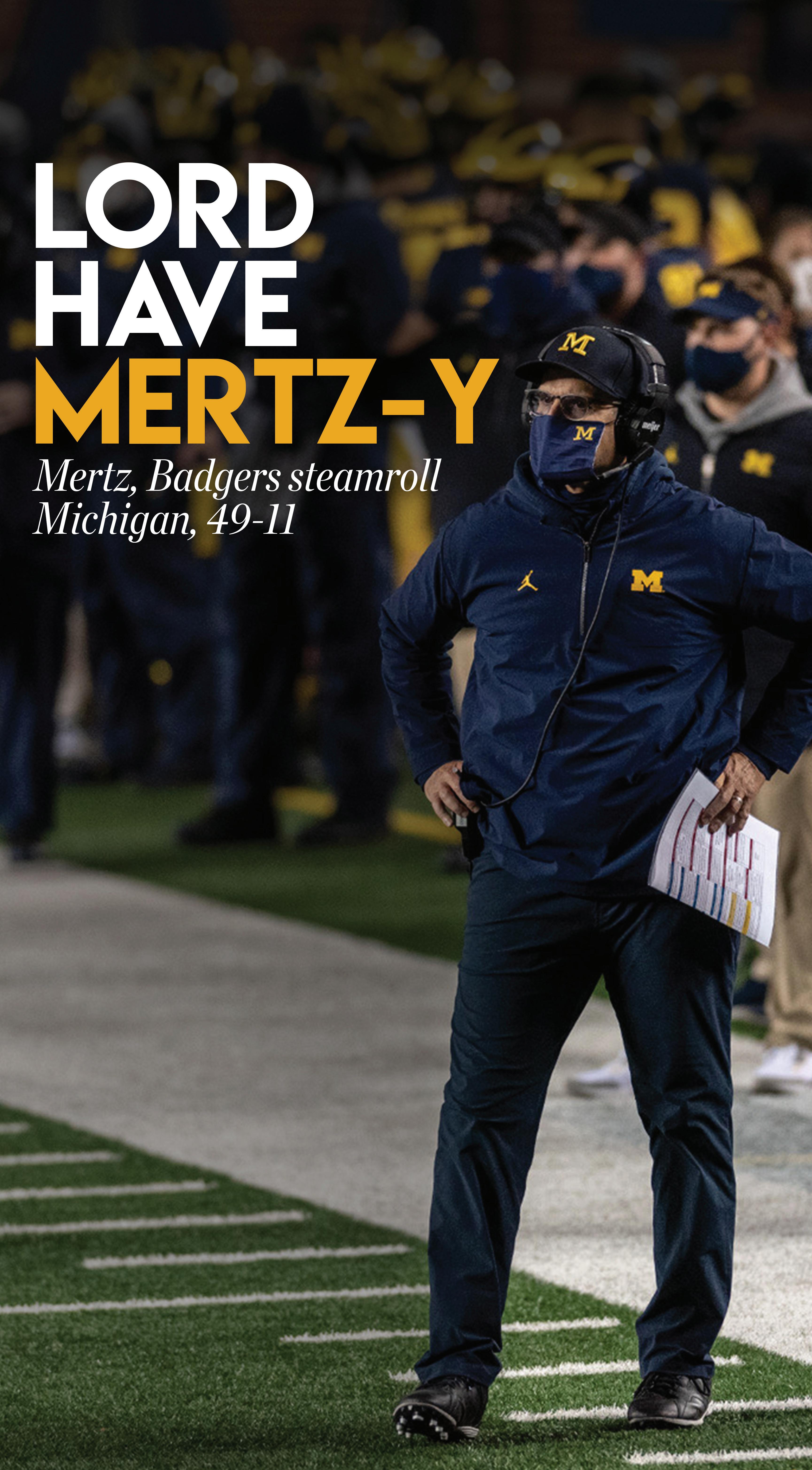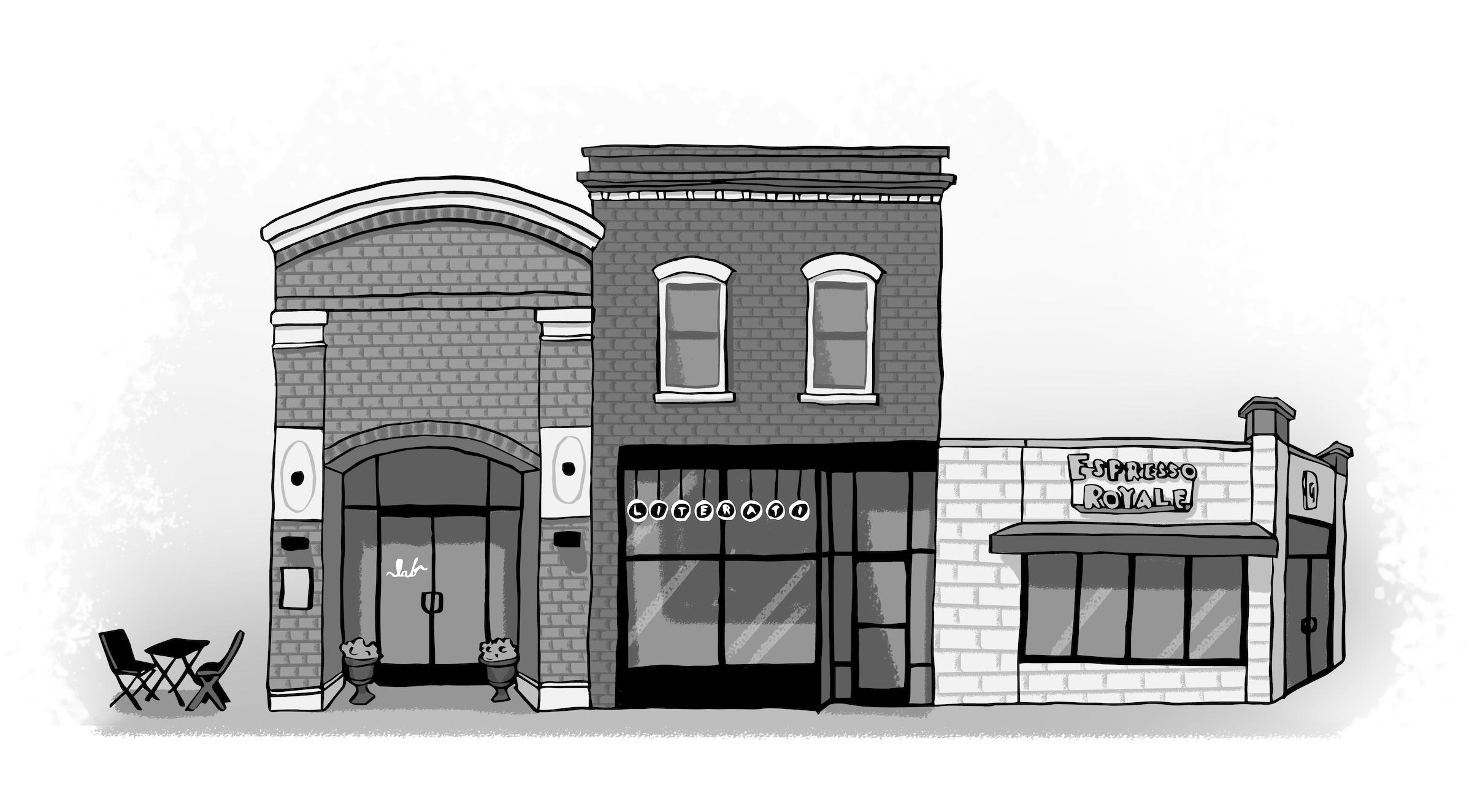
38 minute read
OPINION
from 2020-11-18
Missaukee County, a secluded community in the northern Lower Peninsula with a population just edging 15,000, is a long way from Detroit. According to Google Maps, Missaukee County sits over 200 miles from Motor City, a distance that can be covered in about 3 hours by car.
At first glance, there’s nothing extraordinary about Missaukee County. It’s just another rural community barely noticeable on a map. But dig a little deeper, and there’s something about Missaukee that stands out: It is one of the most conservative counties in the state of Michigan. According to 2020 election results, Missaukee voted 75.9% for President Donald Trump; 75.8% for Republican U.S. Senate candidate John James; and 78.6% for U.S. Rep. John Moolenaar, R-Mich. By contrast, Detroit — the largest city in Michigan and a solid blue community — voted 93.5% for former Vice President Joe Biden; 90.9% for Sen. Gary Peters, D-Mich.; and 92.3% for Rep. Brenda Lawrence, D-Mich.
This vast political divide between communities like Detroit and Missaukee is a phenomenon becoming more common across the country. As urbanization continues and cities and suburbs grow rapidly, rural areas continue to lose both population and power. It is becoming increasingly normal for one or two concentrated urban areas — which usually are predominantly Democratic — to wield control over an entire state. While urban areas continue to expand, taking representation away from sparsely populated areas, our country is forgetting and neglecting rural America.
In Michigan, this trend has been prominent for decades. Metro Detroit, according to the land boundaries delineated by the Detroit-Warren-Dearborn Statistical Area, has a population of 4.32 million people. This means that the greater Detroit region, which covers less than 7% of Michigan’s land area, accounts for over 43% of its population. In the November general election, the two largest counties in Metro Detroit (as well as Michigan), Wayne and Oakland, voted 68.0% and 56.2% for Biden respectively. Votes for the Democratic presidential candidate from vastly urban areas are arguably what put Biden over the top in our state, securing him Michigan’s 16 electoral votes; the same is true for Peters, who also secured Michigan by narrow margins.
There is significant evidence for this phenomenon in other Midwestern states, too. Take Illinois, for instance. Illinois has a population of roughly 12.7 million, but the Chicago metropolitan area accounts for a staggering 75% of that tally, even though it takes up a miniscule 13% of Illinois’ land area. In the presidential election, Illinois voted 55.1% for Biden, even though Trump neared 80% of the vote in many of the state’s rural counties. In Wisconsin, which borders Illinois to the north, the state’s urban areas like MAX STEINBAUM | COLUMN decisively defeated by a coalition of European powers in the spring of 1814. The French emperor was then exiled by the victors to the small island of Elba, off the western coast of Italy. As the coalition powers met to determine the postwar balance of power in Europe, Napoleon, conscious of his popularity in France, slipped out of exile, returned to Paris and, until his final defeat at Waterloo, resumed the imperial throne.
When the royalist government that replaced Napoleon caught wind of the former emperor’s landing in southern France, it deployed the military to stop his march towards Paris. Near the city of Grenoble, some of the royalist soldiers encountered Napoleon’s forces. Napoleon walked up to them and ripped open his coat. “If there is one among you who wishes to kill his emperor,” Napoleon supposedly said, “here I am.” None of the soldiers fired upon him. In fact, they defected, and joined with their emperor’s forces on his march towards Paris. 206 years later and one Atlantic Ocean away, Americans contended with their own emperor. The people Milwaukee and Madison carried Democrats to victory too, with Biden edging Trump by a margin of 20,000 votes. Minnesota, which voted 52.5% for Biden, tells a similar story.
Outside of the Midwest, the same trend is even more apparent. Biden easily won New York’s 29 electoral votes with nearly 60% of the vote, even though the map of the Empire State has vast swaths of red. Pennsylvania, which was seen as a battleground for this presidential election, narrowly handed its 20 electoral votes over to Biden. The former vice president unsurprisingly ran the table in Philadelphia and Pittsburgh, while nearly all of the rural areas in Pennsylvania turned out in massive numbers for Trump.
Finally, as this trend continues in the Midwest and Northeast, it has picked up steam in recent years in Southern and Western states, making it increasingly difficult for Republican politicians to gain traction. One of the most obvious examples of this is the state of Virginia. According to UVAToday, “Virginia in 2000 was a solid red state,” and this year, “its metro areas turned it blue for the fourth consecutive election.” While President George W. Bush picked up a comfortable 52.5% of the vote in 2000 against Democratic candidate Al Gore, Biden had a commanding lead in the same state, winning it by 54%.
Now, political scientists theorize that Georgia is the next Virginia. Like Virginia, Georgia used to be a solidly red state. But the growth of the Atlanta metropolitan area has moved the state from a Republican stronghold to a tossup. While Trump won Georgia by comfortable margins in 2016, Biden just barely prevailed over Trump in 2020, garnering 49.5% of the vote. In the future, it is quite plausible that like Virginia, Georgia will be a solidly Democratic state as the population continues to shift to urban and suburban areas.
Georgia isn’t the only state that is demonstrating these population shifts. For example, as Arizona’s sole urban center of Phoenix continues to enlarge, the state has moved from the Republican column in most elections to an apparent toss up. Trump also took Arizona easily in 2016 but lost to Biden by slim margins in 2020. Nevada, with the growing Las Vegas metro area, and North Carolina, with the Raleigh and Charlotte metropolitan areas, are additional clear examples of this accelerating trend. While Trump won North Carolina in 2016 with little trouble, the state was so close in 2020 that it took days to call.
As the 2020 presidential election becomes a distant memory and time goes by, this trend will not only continue where it has already started, but it will also likely become more common in areas where it has not. While increased urbanization and suburbanization may be seen as very favorable to the Democratic Party, since America’s cities vote reliably Democratic, the deepening urban-rural divide creates problems on the national scale. For one, rural America continues to deal with have spoken, and King Donald I has been dethroned. Now that President Donald Trump will not occupy the Oval Office come Jan. 20, 2021, a civil war is coming. Not that kind of civil war, thank God — a civil war within the Republican Party.
Where does the GOP leadership go from here? Do they try to smother the Trumpian populist movement, drop the lame duck president like a hot orange potato, slowly distancing themselves from a disgraced Trump, in favor of a return to establishment normalcy? Or do they still champion Trumpism, allowing the outgoing president’s movement to continue to define the party?
“You know how to make America great again?” asked Sen. Lindsey Graham, R-S.C., in 2015. “Tell Donald Trump to go to hell.” Sounding like a Democrat, Graham continued by calling then-candidate Trump “a race-baiting, xenophobic, religious bigot,” and defiantly pronounced that Trump “doesn’t represent my party.”
Graham, being the spineless shill that he is, later became one of Trump’s most vocal supporters in the Senate. But will he, and others in his position, now turn their backs on the president again? With Trump now trumped, what’s the expedient move? staggering poverty rates, which advocacy group Save the Children has called an “emergency.” In 2016, according to NPR, almost a quarter of American children growing up in rural areas were poor; meanwhile, rural areas have been plagued by a lack of quality health care options for years, a crisis exacerbated by the pandemic. Rural areas continue to be increasingly forgotten, and these regions aren’t getting the representation they deserve.
More and more, conservative areas of our country are voicing their opposition to liberal power centers far away; rural Americans are tired of being left behind. In left-leaning Oregon, which voted overwhelmingly for Biden, a group of red counties successfully passed a ballot initiative to set in motion a process by which they may leave Oregon and join Idaho. In Illinois, a proposal has been discussed by conservative areas to break off from liberal Chicago. While these conversations are nothing new, they have gotten renewed attention over the course of the COVID-19 crisis, as Democratic governors set regulations for entire states, which includes red areas, to curb the spread of the coronavirus.
There is no easy solution to solve this problem. It clearly sets a bad precedent to allow several counties in one state like Illinois or Oregon to secede. If that were the case, it would only be a matter of time before state boundaries in the continental U.S. looked radically different. Meanwhile, such a trend would have drastic logistical and political consequences.
As the urban-rural divide continues to exert its influence more and more, some people are expressing interest in Nebraska and Maine’s congressional district method to allocate electoral votes in presidential elections. While most states, including Michigan, are winner-take-all, different presidential candidates can win different congressional districts in Nebraska and Maine. If the Electoral College were reformed to operate on the basis of congressional districts instead of entire states, it would take away much of the influence of predominantly urban areas, since rural districts in blue states would typically be won by Republican candidates. Such a change could hurt the Democratic Party in some regions, but it would help both Republicans and Democrats in obvious ways. For example, Texas, Florida and Ohio all awarded their electoral votes to Trump in the 2020 presidential election, but all three of these states have significant blue territory in urban areas. In a reformed Electoral College, while Democrats would be harmed in blue states like New York and Illinois, they would be able to acquire more electoral votes from urban centers that aren’t represented in red states.
Read more at MichiganDaily.com
Evan Stern can be reached at erstern@umich.edu.
It’s hard to predict the behavior of hypocrites like Graham, because hypocrites, being hypocrites, are unpredictable by nature. In the coming weeks, however, the rhetoric of these folks will be telling as to the direction of the Republican Party. But what will the two sides of the Republicans’ civil war be? And more importantly, who will ultimately win the soul of the GOP?
My best guess is the Old Guard — the Mitch McConnell, Lindsey Graham and Kevin McCarthy types — will slowly and surely distance themselves from Trump. Not an outright rejection, but a cautious, wakeless troll in the direction of normalcy. The problem — the futility, really — with this approach is that the party’s base, its soul and core, is so hopelessly anchored to Trump that to shed the naked emperor would be to shed its identity. Once Trump became the Republican Party nominee in 2016 and the likes of Graham decided to become his loyal minions, the GOP became married to Trump. Trump’s loss in 2020 will not mean a clean divorce. In fact, it won’t even mean a separation.
The New York Times’s David Brooks said it well in August 2020. Even in the event of a failed re-election, Trump will “still be the
RILEY DEHR | COLUMN
Living in a hyper-divided post-election nation, it’s easy to forget the feeling of unity that existed at the beginning of the pandemic. Whether it was rallying around our essential workers or sharing our desperate search for toilet paper, a common enemy seemed to unite us, if only for a moment. Perhaps my favorite example of this is the strangest. Throughout the spring and early summer, in Denver, where I am spending my semester, people let out their inner wolf for a minute each evening.
At 8 p.m., as the sun would begin to set, a series of scattered howls would slowly rise into a cacophony that echoed through the entire city. Originally intended as a sign of support for essential workers, it slowly grew to become a community-bonding event. As we all felt the grueling effects of social isolation, calling out to each other, especially in such an unconventional way, felt like the perfect way to express frustration and solidarity during a pandemic. While this habit has since ended, the howling effect may have had a lasting effect on some Coloradans as they were casting their ballots this election.
On Nov. 3, Colorado citizens voted for the reintroduction of gray wolves into their state. Proposition 114, which requires the Colorado government to reintroduce wolves into the Western Rockies by 2024, was the first successful voter-based initiative to reintroduce wolves into any U.S. state. Colorado will join the rest of the Northern Rockies states, as well as Wisconsin, Minnesota, Washington, Oregon, New Mexico, the Carolinas and Michigan to be one of the few remaining states with wolf populations. center of everything Republican. Ambitious Republicans will have to lash themselves to the husk of the dying czar if they want to have any future in the party. The whole party will go Trump-crazed and brain dead for another four years.”
With the exception of a few (and far between) principled stands against
Trump’s lunacy (courtesy of John McCain, Mitt Romney and Jeff Flake), the GOP sold out to a bombastic charlatan who peddled lie upon lie upon lie for 48 straight months, and made “the greatest country on Earth” the dumpster-fire laughing stock of the world. Miraculously, Trump still remains highly popular amongst Republicans. Republican leadership — like everyone in their profession — are nothing if not self-preservational. So long as Trump remains popular with the Republican base, he’ll remain popular with the Old Guard that ultimately embraced him.
The toothpaste is out of the tube; Trumpism will triumph.
Biden restored the professionalism and dignity befitting of a presidential administration.
Oh, howl no!
Before European colonization, wolves lived in every U.S. state except Hawaii. Centuries of deforestation and the carrying out of programs aimed at their total elimination pushed wolves out of every region but two slivers of northern Minnesota and Michigan by the 1930s. After being declared an endangered species in 1978, gray wolves slowly began to repopulate the Northern Great Lakes. Wolves immigrating from Canada or introduced through conservation projects expanded the gray wolf population to include the Upper Peninsula of Michigan and northern Wisconsin.
With an estimated population of 4,400, about two-thirds of the U.S’s wolves now live in these three states. Nearly 700 wolves in 143 packs currently roam the Upper Peninsula of Michigan. They have so far remained in this sparsely populated section of the state, yet to resettle the Lower Peninsula. Even so, wolves have been found in the Lower Peninsula in two incidences in the past few decades — the most recent in 2015. With studies indicating that the Upper Peninsula has nearly reached the maximum number of wolves that it can sustain, the likelihood that these rare examples may one day result in the recolonization of the Lower Peninsula is increasing.
If wolves were to reestablish themselves on the Lower Peninsula, researchers guess that they might end up in one of the various state parks that line the tip of the mitten. Already home to red foxes, whitetail deer and black bears, the area contains vast forested territories that the wolves would need to survive. In their absence, much of the nation
Design courtesy of Erin Shi
has experienced an overexpansion of deer populations and the dominance of the invasive coyote as a primary predator. Here, they would once again fulfill their role as the ecosystem’s top predators, keeping both populations in check. Despite these benefits, spending centuries teaching people to hate wolves has made convincing them to welcome wolves into their communities an expectedly daunting task.
Even in Colorado, where Republicans were heavily outvoted by Democrats, Proposition 114 passed by 1.2 percentage points. Proponents of the initiative were surprised by the slim margins, expecting Denver and its liberal suburbs to push it to an overwhelming victory. It reflects people’s widespread suspicions toward an animal many of us are first introduced to as “big” and “bad.” Republican politicians have long played into these misconceived notions in order to persecute the canines. When they were briefly stripped of their endangered species classification, and the federal protection that comes with it, in 2012, Wisconsin Gov. Scott Walker seized the opportunity to drastically reduce his state’s wolf population and there was even an anti-wolf committee in the Dep. of Natural Resources. During the three hunting seasons the state carried out before a federal judge redesignated their endangered status in 2014, more than half of the state’s wolves
Read more at MichiganDaily.com
Riley Dehr can be reached at rdehr@umich.edu.
We haven’t seen the last of Donald
After the tide turned against his conquest of continental Europe, Napoleon was
were killed.
Anti-Jewish Pogroms and the Origins of Multiculturalism
JEFFREY VEIDLINGER

Joseph Brodsky Collegiate Professor of History and Judaic Studies Director, Frankel Center for Judaic Studies

Online Event: Thursday, November 19, 2020 | 4:00 p.m.
BOOK REVIEW ‘The Mirror and the Light’ fits the political climate
TATE LAFRENIER Daily Arts Writer
Her head makes a dull thud as it hits the platform, rolling a couple feet away as her body teeters and lurches forward, swimming “in a pool of crimson, the blood seeping between the planks.” Queen Anne Boleyn, the second of King Henry VIII’s six wives, has just been executed on charges of high treason, incest and adultery. This is the note from which Hilary Mantel’s novel, “The Mirror & the Light,” kicks off. Mantel’s beautiful prose and attention to detail builds an immersive atmosphere, and her rich characterizations resurrect long-dead historical figures, their tics and quirks shining through to paint distinct portraits. Eight years in the making, “The Mirror and the Light” is the final installment of Mantel’s “Wolf Hall” trilogy, which documents the rise and fall of Thomas Cromwell, a blacksmith’s son from Putney who became King Henry VIII’s most trusted advisor, before being executed on charges of treason in 1540.
Thomas Cromwell is often snubbed by recorded history, which typically remembers him as a conniving, villainous and traitorous lackey of Henry VIII, and, indeed, in Mantel’s historical fiction trilogy, Cromwell has few friends and many enemies. But Mantel casts Thomas Cromwell in
BEN VASSAR
Daily Arts Writer
Why does architecture need a critic? Intention is never outcome, and a building’s meaning is never fixed. As the stage for all of our lives, its subtle impacts can’t be overlooked. The Michigan Daily sat down virtually with Michael Kimmelman, architecture critic at the New York Times, to talk preservation and affordable housing ahead of his virtual visit to Taubman College Monday night as this year’s Raoul Wallenberg Lecturer.
Starting off with the question of preservation — What is its value? What does it safeguard? In discussing a piece he wrote about the Strand Bookstore last year, Kimmelman said, “It’s not just the building itself — the container — but what it contains that is actually the repository of the community’s identity and memory.”
Now, Kimmelman isn’t discounting the look of a building — that’s obviously important. He brings up the issue, rather, because current preservation practice is centered around just that — cosmetics. The NYC Landmarks Preservation Commission, founded in 1963, is, in his words, an “architectural bulwark” against alterations to its city’s historic facades. It lays no claim, however, to interiors nor the institutions that occupy them.
On second thought, this makes sense. A government agency shouldn’t be playing favorites in the private sector. But Kimmelman points out that it’s not unprecedented nor nontraditional to the way our government functions on the level of the individual:
“It’s really dangerous territory when the city begins to favor some kinds of private businesses over another, but we have to do it anyway, with tax incentives and other kinds of benefits,” he said.
“Places like San Francisco, where businesses are also threatened by runaway rental costs, have created funds and other mechanisms to provide a handful of businesses the opportunity of getting some assistance,” said Kimmelman. “It’s essentially intended to say a less one-dimensional and more positive light, as an ambitious underdog trying to survive the whims of a murderously mercurial monarch. Eleven years after beginning this trilogy, Mantel’s grasp on Cromwell has ascended beyond that of a mere biographer. Mantel inhabits Cromwell’s psyche, wrestling with his doubts, fears, regrets and wishes, portraying them so convincingly that the reader takes on those same fears and wishes. The psychological portrait Mantel paints of Cromwell is absolutely mesmerizing, and it is the foundation of this tour de force of a novel. The reader chases after Cromwell as he tries to navigate a highly volatile political landscape, bodies dropping left and right.
In spite of the details and outcome of Cromwell’s story being well known, Hilary Mantel manages to keep the reader on edge, constantly looking over their shoulder, waiting for the dagger to plunge into their back, as it inevitably will into Cromwell’s. She does this so well by constantly circling back to past grudges and mistakes, and keeping all those whom Cromwell has crossed within his immediate vicinity. As Cromwell continues to dance around the incompetent aristocracy around him, Mantel draws out the tension in every communication, setback and even victory over Cromwell’s enemies. She makes the reader well aware of the disgust Cromwell’s peers to businesses on the cusp of closure, ‘we’ll give you enough to tide you over, but you’re not going to become a public institution.’”
Kimmelman is referring here to San Francisco’s Legacy Businesses Program started in 2015. Through it, We can’t continue to be in a situation where we don’t invest in affordable housing for people, because the ramifications are enourmous on the rest of the economy. businesses open 30 years or longer can apply for grants if they can also prove they’ve made “a significant impact on the history or culture of their neighborhood.” It’s by no means collusion, but it is a bit of favoritism.
Moving on to affordable housing, I told Kimmelman about Ann Arbor’s Proposal C on the ballot on election day. Prop. C was a one-mill property tax for the construction of approximately 1,500 units of WIKIMEDIA COMMONS
have for him and his lowly birth, hostility shining through word choice and descriptions.
This sense of foreboding pervades every chapter, and what soon becomes clear is that time, whether it’s the past, present or future, is vindictive, and no one escapes its grasp. Mistakes of Thomas Cromwell’s past echo throughout the novel, and there’s a sense that he can never quite escape those he’s lost along his path to survival. Cromwell is a man of many talents, and tries to not focus on the past, but, unfortunately, “the past is always trickling under the soil, a slow leak you can’t trace.” Shadows of his deceased mentor, Cardinal Thomas Wolsey, flit across his memories at night; the oppressive presence of his abusive father looms over him in his darkest moments; memories of the warmth of his dead wife and daughter taunt him at his most emotionally vulnerable. “The dead,” Cromwell reflects, “are crowding us out.” The years weigh heavily upon Cromwell, and you, the reader, feel it.
But a few of Thomas Cromwell’s spectres are the same ones he sent to the grave himself. After Henry VIII grew tired of Queen Anne Boleyn and set his eyes on another woman (a pretty common occurrence for the king), Cromwell was the man tasked with trying to dissolve the marriage. Though the king was the one who wanted Anne dead, Cromwell was the one who helped build the case that resulted in the execution of her and several of her alleged lovers. Not only does Boleyn’s ghost haunt Cromwell’s conscience, but her former allies do as well.
Cromwell is keenly aware of this, and, even as he rises through the ranks of the English court, he’s never certain of when his sins will catch up to him. Even as he tries to temper Henry VIII’s worst impulses, there’s an uneasy sense that the ground could crumble beneath him at any moment. One slip up, one miscommunication, one failed alliance, and Cromwell might be on the chopping block himself. Mantel summons this fog of uncertainty by wielding the ambiguous motives of Cromwell’s peers to her advantage. With favor of the elite constantly shifting, it’s difficult for the reader not to feel as unsteady as Cromwell does.
It’s oddly reminiscent of our current political landscape, in which lives are subject to the whims of an unpredictable leader, and established officials are ousted day-by-day. As one of Cromwell’s allies puts it: “We both know what it is to serve this king. We know it is impossible. The question is, who can best endure impossibility?” It’s almost comforting, knowing that the turbulent times we’re currently experiencing aren’t unprecedented, but Mantel ruthlessly exploits the undercurrent of fear, engrossing the reader further in the story and

driving home the consequences of such a turbulent atmosphere.
The fear isn’t unfounded, either. History tells us that the life of Thomas Cromwell does not end happily: After orchestrating Henry VIII’s third marriage, and then failing to dissolve that marriage when Henry found his bride unattractive, Cromwell is charged with treason, and sentenced to die. The reader knows this from the outset, and it’s just a matter of time until that actually happens and Cromwell falls from grace. The reader’s foreknowledge of his fate makes the last section of the book all the more poignant: After Thomas Cromwell, a nobody from nowhere, is made the Earl of Essex by the king, it seems that he has finally made it out of the woods. “He had thought the sands of time were running out: running through the cracks in the shining bowl of possibility he holds in his
MADELEINE GANNON Daily Arts Writer
Editor’s note: Del Rey responded on Nov. 17 to clarify that the mask worn during the book signing included a plastic lining. Her response can be found on Twitter.
It all started at a book signing in Los Angeles, Calif., where pop icon Lana Del Rey read passages of her new poetry book, “Violets Bent Backwards
Over the Grass.”
Pictured on Twitter: Lana
Del Rey in a mesh face mask.
Then all hell broke loose.
In a move surprising to none, criticism from fans came down hard and fast. Most (if not all) of the comments emphasized the irresponsibility of Del Rey’s choice of mask during a global pandemic. The nature of the event made the incident more incriminating –– a book signing by nature involves intimate one-on-one social interaction, and multiple photos of Del Rey posing with fans only added fuel to the fire. Swift as a California forest fire, Del Rey’s Twitter fans tore her down.
Here, a familiar pattern breaks out: cancel culture.
Social media has allowed a system of extremes to develop, an environment where declarations of allegiance are a necessity to claim “citizenship” of “woke culture.” If you don’t love somebody, you have to hate somebody –– the middle ground is no longer acceptable.
Judgement calls can be made by anyone, anywhere, anytime.
Online platforms act as personal megaphones. Often, the loudest voices are not the most accurate voices. And when it comes time to bring the gavel down and mete out justice, it becomes the shot heard around the world.
Can we still love our icons when they become
“problematic?” This is often asked in a global culture which is increasingly black-and-white when it comes to identifying what behavior is right and what behavior is wrong. Questions whispered in layered guilt by fans who have found their favorite icons suddenly struck from favor. In a way, online justice feels as fickle and unyielding as that of an emperor or king.
Now, Del Rey stands before the chopping block, and her legions of fans watch in fear and hands. ‘Now all is mended,’ he says.” Cromwell, after a lifetime of anxiety, would finally be able to focus solely on effecting change, rather than on merely surviving.
But history ripped the rug out from under him, and Mantel ensures her readers feel the force of that fall. Henry VIII orders Cromwell imprisoned, and the vultures who have been circling Cromwell the entirety of the novel are finally able to descend. It’s difficult not to admire Cromwell, so it’s devastating, even infuriating, when the futility of all his efforts becomes apparent. All of these elements — the atmospheric, the emotional, the political — coalesce into a gripping historical drama. Hilary Mantel had me enamored with this beautiful conclusion to her trilogy.
Daily Arts Writer Tate LaFrenier can be reached at tlafren@umich.
COMMUNITY CULTURE REVIEW New York Times architecture critic talks social change at Taubman

affordable housing over the course of 20 years, and it passed with a 73% vote. In lieu of these promising results, I asked him if he thought New York City had sufficient rent-controlled and subsidized housing.
“Well, that’s a short answer: no,” he said. Subsidized housing had been largely in the hands of private developers since the Nixon administration. This has undeniable advantages, but also makes public good dependent on private profit.
In short, he eventually said, “we can’t continue to be in a situation where we don’t invest in affordable housing for people because the ramifications are enormous on the rest of the economy. Health problems, homelessness problems, problems of policing and crime, mental health problems…” the list goes on.
Kimmelman has been waving the red flag on issues like these since his first piece under his current role in 2011 called, “In a Bronx Complex, Doing Good Mixes With Looking Good.” In that piece, he wrote about Villa Verde, an unusual public housing project for its distinguished look, amenities like an on-site health clinic, and, correspondingly, a high cost per square foot.
Noble as its aims may have been, such expenditure didn’t come without criticism for the 252-unit complex in a neighborhood with 66,450 people per square mile — almost 40% living below the National Poverty Line.
“If you’re a housing advocate, and there’s such a
shortage of housing, that extra money could have gone to more units instead of to better design. So there was some debate as to whether it was an efficient use of funds, I think there’s an argument that it was,” Kimmelman said.
The architects and developers wanted a project that signaled what public housing could be. Kimmelman suggests that it achieved that — it doesn’t blend into its context, it sits loudly at the foreground. It shows what happens when architects and developers meet community members where they are. As he says in the article, “What is that worth?”
Kimmelman acknowledges in his writing that architecture itself doesn’t solve poverty and unemployment. But it has immeasurable value in uplifting the spirit and instilling a sense of pride in place. This extends far beyond housing: “public space, streets, parks, schools, transportation… they all work together to provide a decent, healthy life for people,” he said.
Kimmelman will be speaking in greater depth on these issues Monday night at 6:00 p.m. with Taubman College Dean Jonathan Massey as well as the college’s Dimensions and Agora student publications. As the Wallenberg lecturer, the conversation will be centered on “architecture as a humane social art.” Registration is free and open to the public via this link.
Daily Arts Writer Ben Vassar can be reached at benvas@ umich.edu
Lana Del Rey and MUSIC NOTEBOOK the mesh mask
edu anticipation to see if her “head will roll” next. Does a mesh mask disqualify her from our love? It seems such an insignificant misstep for an idol who the world has cherished for so long. But the pandemic has killed hundreds of thousands of people –– a number so large, it seems unfathomable. Mask etiquette has become synonymous with compassion, intelligence and human decency. Del Rey’s fashion choice feels like a slap in the face for those who have been intimately hurt by COVID19 and for those who wear their masks without issue. Celebrity status does not exclude Del Rey from responsibility.
Other whispers online have suggested that Del Rey glamorizes abusive and toxic relationships; some have accused the artist of being a secret “Trump supporter,” going so far as to say that Del Rey’s American vintage style is indicative of her personal politics (“Harken, ye old glory days”). However, all of these accusations and musings on the internet are just that –– whispers. One can’t help but wonder if fans and critics alike are simply fishing for some fresh meat to bite. With tensions high and safety protocols demanding frequent isolation, the spotlight turned towards the internet. Everyone loves a good Twitter fight, too.
Should Del Rey be deemed “problematic” by the “high courts” of the internet? Do we abandon her completely? Do we shun her music and her poetry? Does this become a hard break-up, with deleted phone numbers and zero contact? Or is it a cowardly retreat, where Del Rey is publicly shamed and ostracized in daylight while the world continues to indulge in her music as a guilty pleasure.
This article poses a lot of questions, I know. Cancel culture paints itself as progressive and self-reflective: On the positive side, society has learned to hold the powerful accountable, to critique the heroes and reflect on how their larger-than-life reputations actively shape reality; on the other hand, cancel culture can be triggerhappy, overeager to place blame while enabling (sometimes anonymous) individuals to boost their own egos by tearing Read more online at
michigandaily.com
Arts
Netflix’s ‘Jingle Jangle’ makes Xmas exhausting
who has lost the Christmas store.
ANDREW WARRICK spirit and turned his once They live in a place called Daily Arts Writer wonderful toyshop into a “Cobbleton,” which is dilapidated pawn shop. It appropriate, as the story is
Christmas comes earlier is up to his granddaughter, completely cobbled together every year. The day after Journey, played by Madalen from other Christmas films. Halloween, nowadays, The power of belief plastic trees and from “The Polar twinkle lights fill store Express,” Santa’s shelves, DJs across toyshop and a barely the world queue up remixed version of “A Mariah Carey’s classic Christmas Carol” are Yuletide anthem and Starbucks puts Watching “Jingle thrown into a fauxiron pot with a large gingerbread in their coffee. In 2020, this Jangle” is like being helping of steampunk flavor and musical seemed like a welcome dragged behind the numbers a step below distraction. The Holiday Season began Polar Express, curb- even the worst madefor-TV movies. as a warm, colorful respite from the stomped by Ebenezer Whenever the music swells, one braces for pandemic and election Scrooge and, finally, it. Every song goes on uncertainty. Then came the run down by Santa’s at least a minute too long, and the lyrics Netflix film “Jingle Jangle.” sleigh, all while the and instrumentation are the kind one Watching “Jingle Jangle” is like being shrill laughter of elves hears waiting in line at a crowded, sweaty dragged behind the fills your ears. department store, Polar Express, curb- last-minute gifts in stomped by Ebenezer hand, wondering if Scrooge and, finally, this whole Christmas run down by Santa’s thing is really just an sleigh, all while the expensive waste of shrill laughter of elves time. fills your ears. It could’ve worked.
Forest Whitaker Whitakter is great (“Rogue One: A Star Wars Mills (“Reality Cupcakes”), in the film, as are Madalen, Story”) plays an inventor to breathe festive life into his Keegan Michael Key (“Key and named Jeronicus Jangle, dusty heart and even dustier Peele”) and the rest of the cast. The set design, costumes and visual effects are immaculate. The movie’s snowy, clockwork Victorian aesthetic is unique, and quite beautiful. There’s a robot named Buddy 3000 who, even if he skews a little too close to WALL-E, is absolutely adorable.
Still, “Jingle Jangle” is almost sickening, like a pile of over-iced Christmas cookies shoved right in your face.
The film is devoid of any sort of bite. There is not one scene in “Jingle Jangle” where one wonders, even just for a moment, if things will turn out alright. There’s just smiling, and singing, and smiling and singing, and more smiling and more singing. It’s exhausting.
“Jingle Jangle” may be
BEN SERVETAH Daily Arts Writer
Contrary to popular belief, the multi-cam sitcom isn’t dead.
Several cameras centered around one set to simultaneously record a scene. It’s an easy, painless setup that was popularized in 1951, when “I Love Lucy” won the hearts of the American public and left a permanent imprint on our digital culture. Since then, the multi-camera setup has given birth to some of the most iconic moments of our country’s history. From “Seinfeld” to “Friends” to “The Big Bang Theory,” it is impossible to discuss the story of television without it.
Yet, throughout the last decade, the cultural relevance of this production style has undeniably dwindled. Single-camera comedies like “Community” and “The Office” have ushered in a new norm for television humor, without laugh tracks or flat visual styles. It’s a medium that has fared far better among younger audiences. I hadn’t introduced myself to a new multi-cam sitcom in years.
Nevertheless, pressing play on the pilot for CBS’s latest “B Positive” felt strangely comforting. There’s a sentimentality in the style. It can be argued that it exists purely on nostalgia, but the palatable format just makes starting a new show so … effortless.
It’s ironic, then, that a series so seemingly lighthearted is built around such a dark, dramatic premise. Drew (Thomas

marketed for a younger audience, but that doesn’t mean there shouldn’t be conflict. Christmas classics like “Frosty The Snowman” and “Rudolph the Red Nosed Reindeer” still have active antagonists, and moments of threat or peril, to give a hint of winter chill that makes the Yuletide warmth of Christmas so comforting. In November 2020, sugary sweet won’t cut it.
Additionally, the sci-fi element of the movie ranges from silly to disturbing. The magic system of Jangle’s word is a mixture of math and mysticism: Characters draw glowing equations in the air (a la “Doctor Strange”) and perform equations like the “Square root of possible.” Middleditch, “Solar Opposites”) is a divorced father in need of a new kidney. Facing his potential death, he struggles to find someone supportive enough to give him their own. That is, until he runs into Gina (Annaleigh Ashford, “American Crime Story”), an airheaded substance abuser with a heart of gold. At a mutual friend’s wedding, Gina drunkenly re-connects with Drew over a vague high school in a weird space of time where the future of multicam comedies is uncertain. friendship and spontaneously offers him her own kidney.
Thus, an odd couple is formed. If Drew wants to live, he must help Gina stay sober. If Gina wants to do good, she must defeat her addiction to drugs and alcohol.
Along with a heavy setup, the pilot teases at jokes that stray far from where its peers are often comfortable going. When the doctor recommends a family member for the kidney transplant, Drew remarks, “Oh great, a Republican kidney.” There are references to Xanax use, visible bongs and even That’s the silly bit.
More upsetting is a sentient toy named Don Juan, bizarrely played by Ricky Martin (“American Crime Story”), who is created, and (spoiler alert) shut off, essentially “killed,” by Jangle at the end of the film. Jangle says Don Juan will be reprogrammed to be more obedient. A life with agency, emotion and sentience is extinguished, and everyone smiles away. Whenever I watch “A Christmas Story,” the last thing I say is “This needs just a bit more existentialist horror.”
If one is looking for a Holiday escape, stay far, far away from Cobbleton.
Daily Arts Writer Andrew Warrick can be reached at
Highlights from this year’s virtual Polish film festival
Since her mother does not speak for Ola as she faces her father’s
ROSS LONDON English, Ola must be the one to flaws, flaws which help Ola Daily Arts Writer fly to Ireland and retrieve her come to terms with her father’s father’s body. At 17, Ola must interiority and selfhood. A life
In its 27th year, the Ann rescue a man she hardly knew only appreciated in death is the Arbor Polish Film Festival has from the purgatorial bureaucracy film’s sad irony. been virtualized as a result of of death. Confronted by long lines, As a coming of age tale, the COVID-19. The slate of shorts, expensive cigarettes and unfeeling film has an unconventional feature films and documentaries doctors, the Polish teenager must rawness. The challenges faced are streaming on the Michigan grapple with the life lived by her by the protagonist are not Theatre website in lieu of live father, independent of his role as contrived, rather all too real. Ola’s screenings. One of this year’s absent patriarch. Through such a growth culminates in a moving feature films is “Jak Najdalej St d,” struggle, Ola gains perspective on catharsis at the film’s end, as her or “I Never Cry” in English. relationship with her Written and directed by father is grounded in Piotr Domalewski (“Silent personal significance. Night”), the film explores As a criticism of a verythe cruelly ubiquitous loss contrived bureaucracy, of a parent through the eyes the film lands precise of a young woman. “I Never Cry” prompts the viewer to One of this year’s blows. Investigating all of the gratuitous reconsider their role in the lives of others. feature films is “Jak processes surrounding death, civid, sacred and Ola (Zofia Stafiej, “25 Years of Innocence”) is seventeen years old, and Najdalej St d,” or “I Never Cry” in social, Domalewski recenters the emotional. Watching Ola desperately wants a car. She has failed her driving test English. endure the death of her father in international three times (though the last isolation, those of us in failure was definitely not some degree of COVID her fault), and can’t afford isolation may be able to take the test a fourth to empathize. Those time. She wouldn’t be able who have lost a parent to afford a car, either, but can empathize with her father promised to send Ola on another level. her the money as soon as she gets herself in relation to others. No matter one’s situation, the her license. Ola’s dad is in Dublin, “I Never Cry” is a poignant viewer is encouraged to pause working for a shipping company meditation on loss and the and appreciate the lives of others, and sending money home to sometimes strange distance especially the lives of our parents. Poland where Ola lives with her between kin. As she meets the As we tumble through even the mother (Kinga Preis, “53 Wars”) people who knew him, Ola seeks most quotidian bureaucracies of and brother (Dawid Tulej) who to reconcile the father she knew modern life, seeing the interiority has a disability. Coincidentally, with the man she did not, but and humanity in one another Ola misses a call from her father comes away with little more demands a concerted effort, one during driving test number three, than limp placation: “He did his we all ought to eagerly make. and finds out later that same best.” Despite the mundanity of Contrary to popular belief, the day that there was an accident this remark, uttered first by the multi-cam sitcom isn’t dead. involving a shipping container. foreman of the shipping company Daily Arts Writer Ross London Her father had been crushed. where her father worked, it can be reached at rhorg@umich.
Thus begins Ola’s journey. becomes something of an anchor edu.

CBS ‘B Positive’ puts a darker spin on multi-cam sitcoms

warricka@umich.edu. cocaine dust. The show’s opening credit sequence, most notably of all, is fantastically disturbing and gory. (Seriously, check it out).
Politics, gore and drug abuse are all things that you don’t often find directly in multi-cam sitcoms. In no way would I call the first episode a failure (I am certainly intrigued to see where they take it), but I’d have to imagine it’s not going to be easy to strike a working groove with the medium chosen. Even so, I’m glad to see risks taken and envelopes pushed in a format that so many consider outdated. “B Positive” exists in a weird space of time where the future of multi-cam comedies is uncertain. Though “The Big Bang Theory” put up numbers as high as “Game of Thrones” last year, there is most definitely a feeling in the air that the style has lost its vigor. While I’m not overly optimistic that “B Positive” will be the show to change that stigma, some genuinely interesting seeds were planted. I hope they continue to take risks and find their foothold in the Golden Age of Television. To say that this past week was stressful is an understatement. I found it difficult to focus on anything, whether it was homework or watching a lecture for more than 30 minutes. But recently I’ve rediscovered something very special: the Charlie Brown holiday specials. I know these are important parts of the holidays, but for whatever reason I had completely forgotten about them — until now.
Daily Arts Writer Ben Servetah can be reached at bserve@umich.edu.





